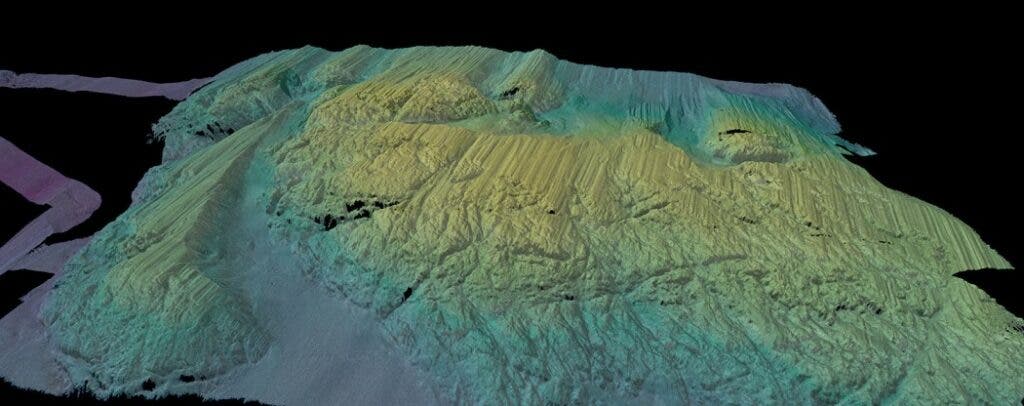The Thwaites Glacier, also known as the “doomsday glacier” due to its high risk of collapse and threat to global sea level rise, is holding on “by its fingernails,” scientists report in a new study. They deployed an advanced robotic submarine to gain new insights into the glacier — and found some bad news.

The glacier is about the size of Florida, and it’s in trouble. All ice on Earth is threatened by climate change, but Thwaites is even more problematic because its underwater base is also being eroded. Its melt rate is accelerating, with its outflow speed doubling in the last 30 years and some studies suggesting it could be just a few years away from collapse. Now, scientists have mapped its historical retreat, trying to anticipate what will happen to the glacier in the future — and how this will affect the world.
The researchers found that at some point in the past two centuries the base of the glacier was freed from the seabed and retreated at a rate of 2.1 kilometers (1.3 miles) per year. That’s twice the rate that scientists have seen in the past decade, suggesting that Thwaites could experience a fast retreat in the near future, they argued in the study.
“Thwaites is really holding on today by its fingernails, and we should expect to see big changes over small timescales in the future – even from one year to the next – once the glacier retreats beyond a shallow ridge in its bed,” marine geophysicist and study co-author, Robert Larter, from the British Antarctic Survey, said in a statement.
A map of the glacier’s seafloor
For the first time, the researchers mapped in high-resolution a critical area of the seafloor in front of the glacier, giving them a window into how Thwaites moved in the past. The imager shows geological features that were previously unknown and offers a sort of crystal ball that can help us predict Thwaites’ future.

The researchers documented over 160 parallel ridges that were created as the glacier’s edge retreated and went up and down with the daily tides. To collect the imagery, the team launched a state-of-the-art robotic vehicle called Rán loaded with imaging sensors during an expedition in 2019. Rán embarked on a 20-hour mission to map the seabed and produced images of never-before-seen features of the glacier.
“This was a pioneering study of the ocean floor, made possible by recent technological advancements in autonomous ocean mapping,” Anna Wåhlin, an oceanographer who deployed Rán, said in a statement. “The images Ran collected to give us vital insights into the processes happening at the critical junction between the glacier and the ocean today.”
The researchers matched the ridge formations with tidal cycles and found each of these ribs was likely formed every day. This enabled us to draw conclusions about the date of the retreat, estimating that at some point in the last 200 years Thwaites retreated at a rate of about 2.1 km – twice the retreat measured by satellites between 2011 and 2019.
Alastair Graham, the lead researcher from the University of South Florida’s College of Marine Science, said that while this was a “once in a lifetime mission,” he hoped to return soon to gather samples from the seabed. This could determine when the previous rapid retreats happened, helping scientists to predict future changes in more detail.
The study was published in the journal Nature Geoscience.






